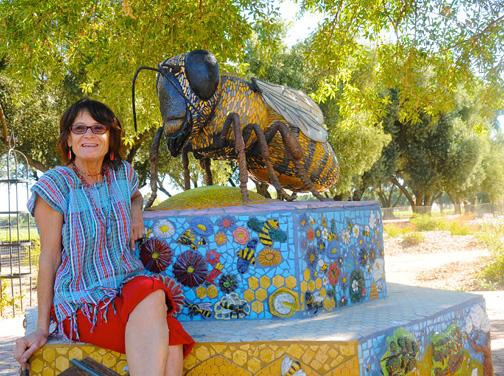
Then just add bees. Ceramic bees.
Northern California artist Donna Billick and UC Davis entomologist Diane Ullman, co-founders and co-directors of the 16-year-old UC Davis Art/Science Fusion Program, have launched a hands-on educational, bee-awareness program called "Miss Bee Haven" in which participants sculpt ceramic bees for their garden or home.
"We're trying to make a difference in supporting hard-working bee populations around the world by creating a permanent ceramic tribute to them," said Billick, who is also a beekeeper. She keeps four bee hives on her property just outside the city of Davis.
Ullman is the associate dean for undergraduate academic programs in the UC Davis College of Agricultural and Environmental Sciences and a professor of entomology. Billick, a self-described rock artist, directs the Billick Rock Art and Todos Artes, creating large-scale public art.
They're inviting people of all ages, from children to senior citizens, to sculpt a bee with clay and glaze as a "handmade tribute to our pollinators, the bees."
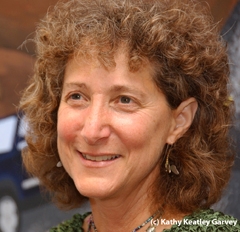
She added: "This is a strategy where learning about bees is passed onto a community of people by a team of artists and scientists that use the medium of clay to teach. The intention is to assist the learners to make a beautiful clay sculpture of a bee."
The bees are structurally correct, from the wax glands to the pollen basket to the sting. Participants form a bee with clay and paint it. Then the bees are fired in a ceramic kiln to be "a permanent rock-hard tribute to our bee pollinators." A metal rod holds the bee upright for placement in a flower bed, potted plant or vase.
"They're beautiful," said Queen Turner, head of the beekeeping section at the Ministry of Agriculture in Botswana. Turner, who recently completed a 10-month academic mission as a Hubert Humphrey Fellow, found time to create two bees at Billick's studio before heading back to her native country. She treasures them.
As she was molding them, Turner said she felt "one" with the bees.
Billick, the artist who created the six-foot-long worker bee sculpture that anchors the Häagen-Dazs Honey Bee Haven, said the Miss Bee Haven project "serves as a response" to the colony collapse disorder (CCD) that is adversely affecting the entire world.
"Our relationship with our bee populations is in danger and in need of attention; bee awareness is our mission," Billick said. "The mission is to identify with bee culture inside the hive, and the bees outside the hive--the field bees that serve as pollinators."
To increase public awareness of honey bees, Billick and Ullman are providing the ceramic bee-making sessions to community organizations, groups, clubs and schools or "basically, anyone who wants to make a bee."
To date, the reaction has been fantastic, Billick said. "It is an educational experience and one that creates heartfelt awareness and appreciation for our smallest agricultural workers, the honey bees."
Some of the UC Davis Art/Science Fusion Program's work, fusing art with science, graces the Haagen-Dazs Honey Bee Haven. The half-acre bee friendly garden is located on Bee Biology Road, next to the Laidlaw research facility.
More information on setting up workshops to create ceramic bees is available from Billick at rockartus@aol.com or (530) 219-5918 or Ullman at deullman@ucdavis.edu.
Attached Images:
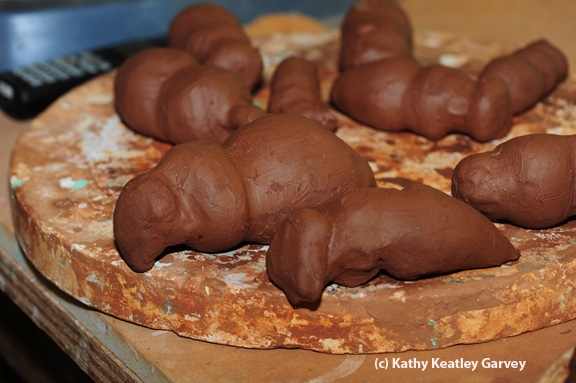
The Miss Bee Haven Project starts with a lump of clay. (Photo by Kathy Keatley Garvey)
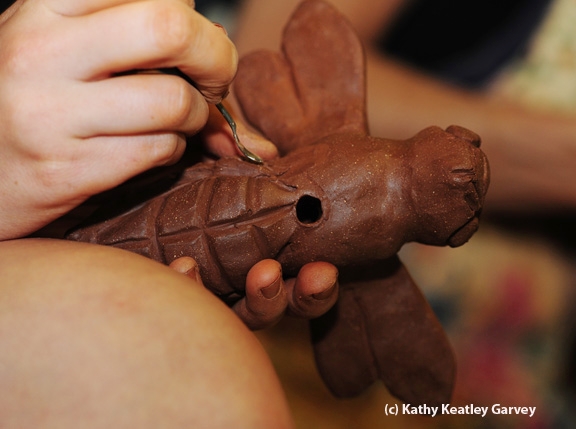
Special tools are used. The hole is for a metal rod. (Photo by Kathy Keatley Garvey)
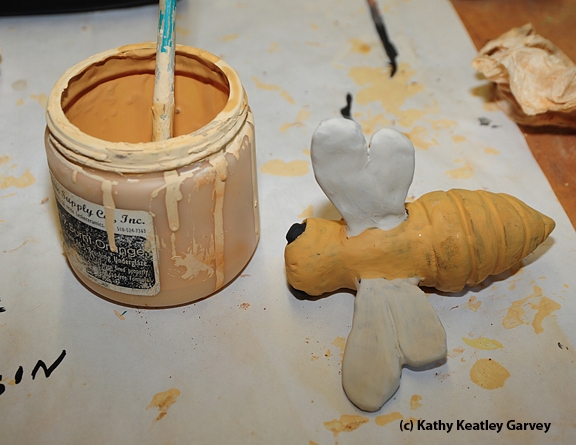
Paint is added next. (Photo by Kathy Keatley Garvey)
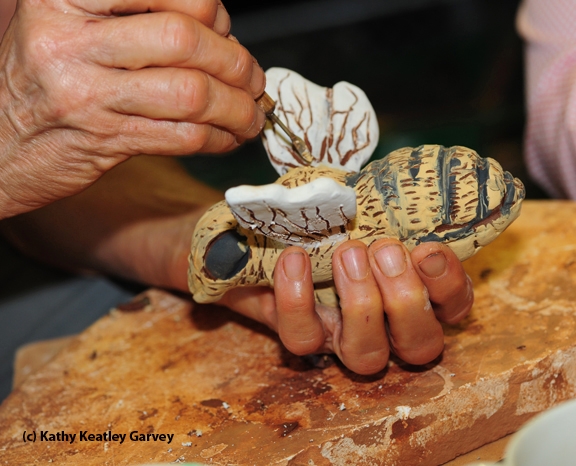
Wings receive special treatment. (Photo by Kathy Keatley Garvey)
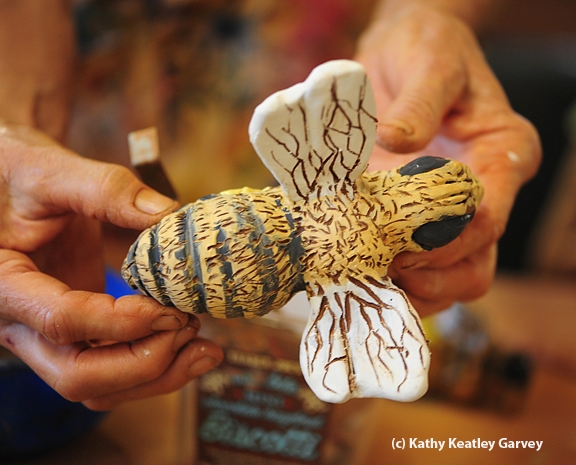
Almost ready to fire in the kiln. (Photo by Kathy Keatley Garvey)
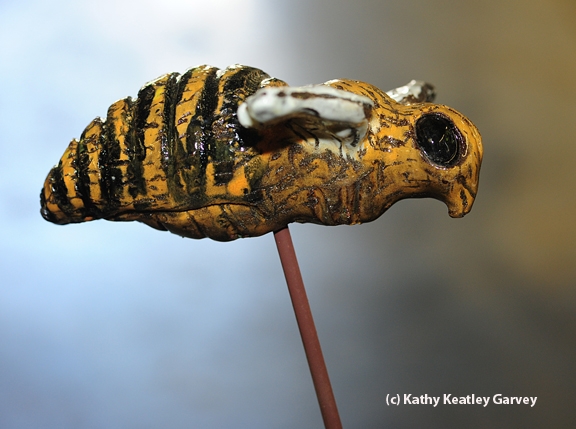
The finished product: a ceramic bee on a metal rod. (Photo by Kathy Keatley Garvey)